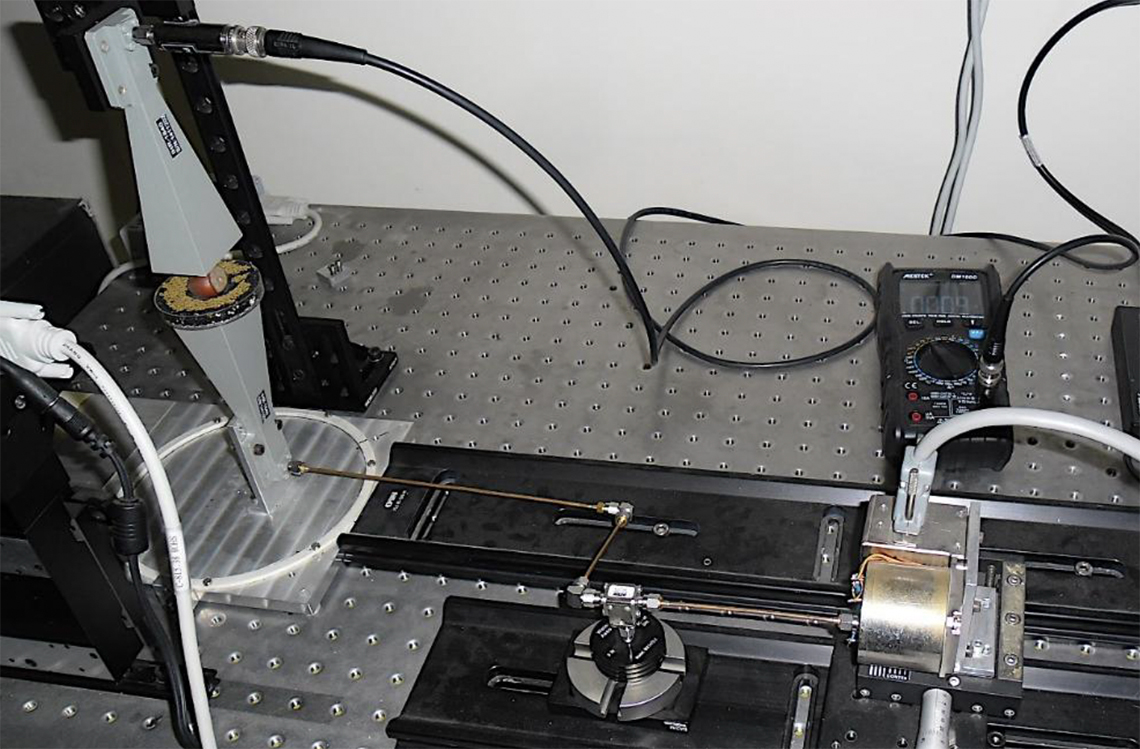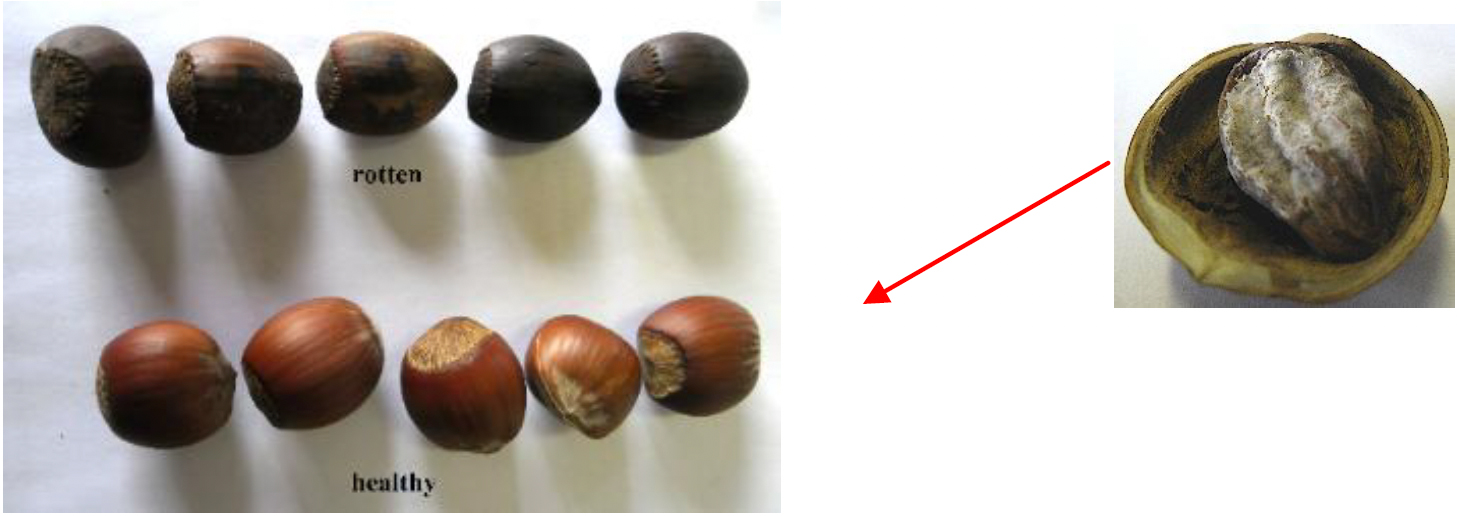Italian National Agency for New Technologies, Energy and Sustainable Economic Development

Agriculture: ENEA develops technology to detect ‘healthy’ hazelnuts with Terahertz radiation and AI
ENEA has developed a technology capable of quickly identifying damaged hazelnuts in in-shell fruits and remove them before industrial processing. The system, composed of a solid-state Terahertz (THz) source and a detector (fig.1), measures moisture content in hazelnuts, a qualitative parameter considered very important for its storage capacity by the companies operating in the field.
The efficacy of this technology has been proved at the laboratory, but thanks to its simplicity it can be easily implemented in an industrial system applicable to the hazelnut supply chain. Furthermore, the technology has grown more refined with an artificial intelligence (AI) system, implementing a neural network on a large number of samples.
“The cultivation and processing of hazelnuts is an Italian agri-food sector of excellence, with a supply chain involving different companies sizes, from small farmers to large multinationals”, pointed out Manuel Greco, who is conducting his research doctorate on the subject in a collaboration between ENEA and Roma Tre University.
“The sector – he said – requires increasingly efficient methods to identify damaged fruit that, when placed into production, can quickly lead to infection of others and loss of a whole batch. At the moment, the automated selection procedure is available only for shelled fruits”.
Already applied to the nuclear field and the conservation of cultural heritage, the system developed at the ENEA Frascati laboratories is based on the THz radiation, which has slightly higher frequencies than those used in microwave ovens. “The electromagnetic radiation, at these frequencies, can easily pass through dielectric materials like an hazelnut shell, and detect the moisture content of the fruit”, explained Emilio Giovenale, ENEA researcher at the Plasma Applications and Interdisciplinary Experiments Laboratory.
“Measuring the transparency to THz radiation of a certain quantity of hazelnuts showed that damaged ones were much more transparent than healthy ones, even even when the fruit appeared healthy at visual inspection”, said Giovenale (fig. 2 ). “This system improves identification and enables to better define the threshold between healthy and damaged samples, based on the requirements provided by users,” he said.
In addition to applications for identifying damaged fruits, the technology can be used to monitor the growth cycle of a fruit until maturation by measuring its moisture content, a key factor in ensuring a longer preservation.
For more information please contact:
Emilio Giovenale, ENEA – Plasma applications and Interdisciplinary Experiments Laboratory, emilio.giovenale@enea.it
Loretta Bacchetta, ENEA - Bioproducts and Bioprocesses Laboratory, loretta.bacchetta@enea.it
Antonia Lai, ENEA – Diagnostics and Metrology Laboratory, antonia.lai@enea.it


